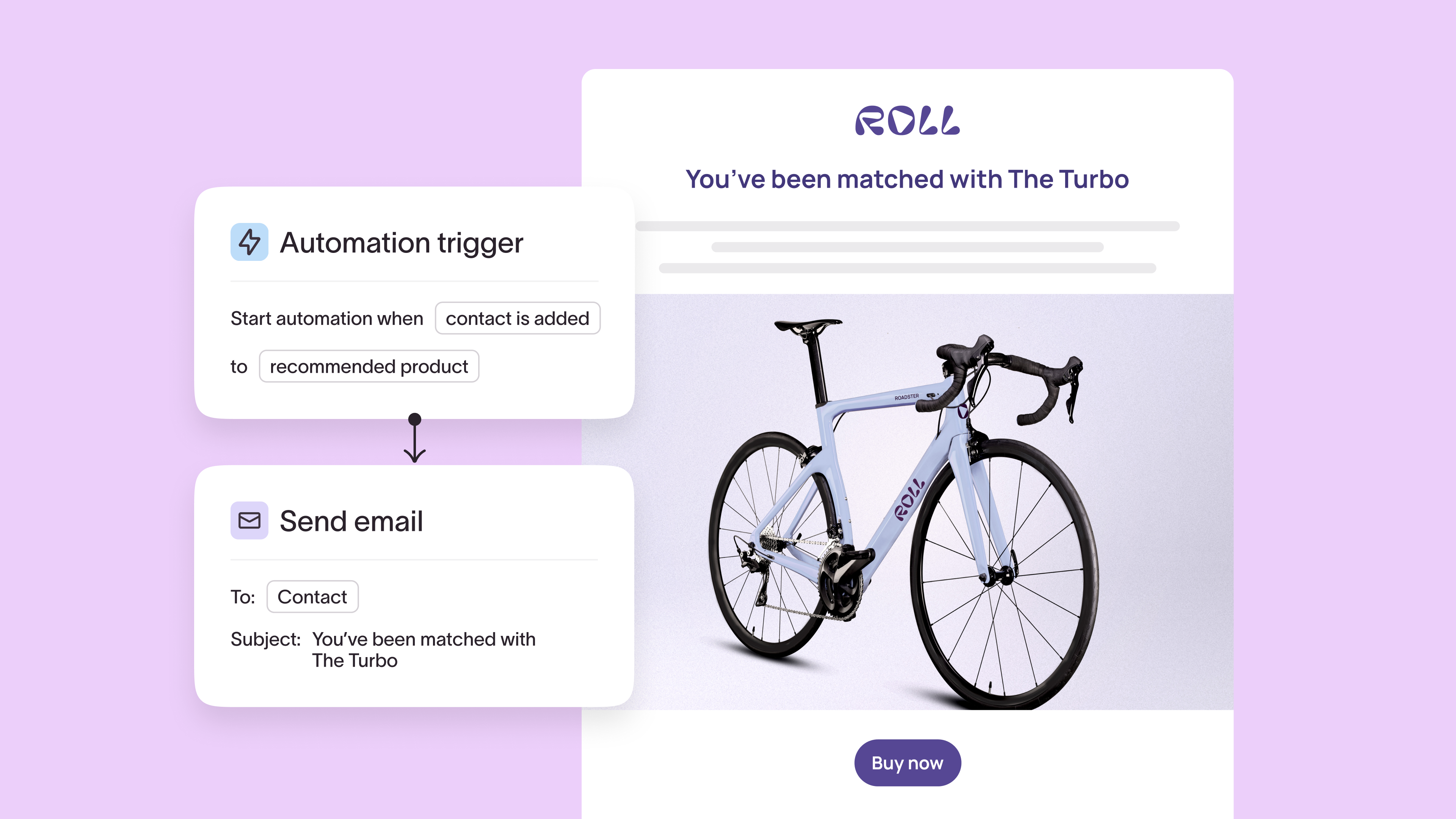A human approach to employee engagement: Shifting from metrics to cultural mindset
Want true employee engagement? Stop approaching feedback as a checklist or metric to track. Build a culture that leads with curiosity and seeks continual improvement based on real employee feedback. The right employee engagement survey can be one of your most powerful tools.

Contents
Have we become so obsessed with metrics that we’ve forgotten the human side of employee engagement? Whether it’s employee satisfaction scores, retention and turnover rates, or employee net promoter scores (eNPS), we’ve been programmed to look at the numbers. It’s always, “Did we meet our key performance indicators (KPIs)?” instead of, “Do we understand what our employees need?”
Your employees are more than scores, rates, or numbers. They’re living, breathing humans. Even still, we’re looking at employee engagement as a metric.
What if we’ve been measuring the wrong thing? What if it’s time to approach employee engagement on a human level?
We’re exploring how you can reimagine engagement as a cultural, everyday practice and how you can build a more human employee engagement strategy with Typeform.
What is employee engagement?
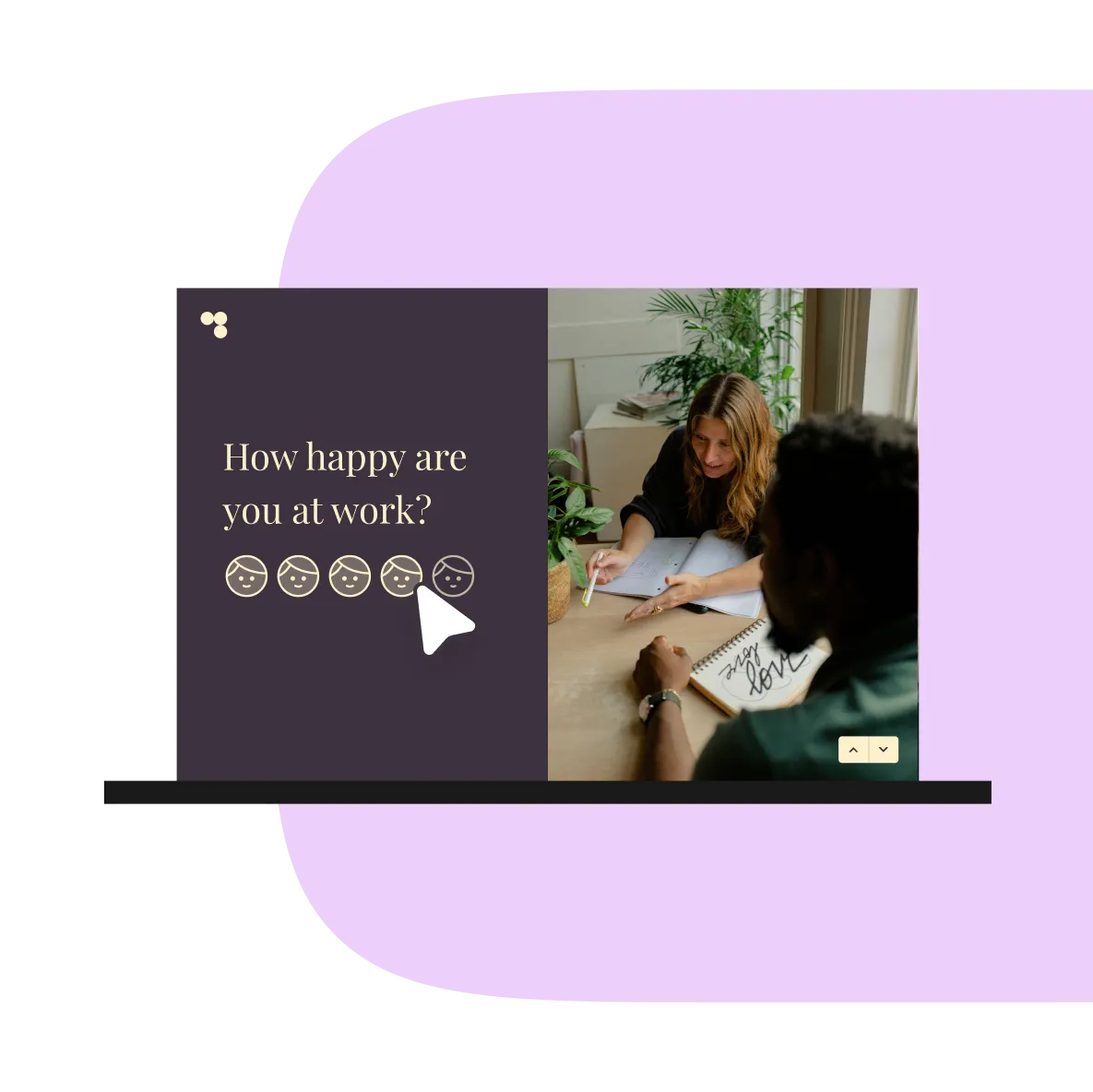
Each company has its nuances, but generally speaking, employee engagement is "a performance strategy that distinguishes high-performing cultures from struggling ones," says Gallup.
Notice the phrase: high-performing cultures. Employee engagement isn't just how many employees selected "satisfied" on your employee satisfaction survey. No—it's about how safe employees feel expressing hard truths and feeling like they're part of an organization that truly values what they have to say.
Employee engagement is culture. And it's not something you can check off your to-do list when you get a majority of "satisfied" responses. Engagement is a daily commitment to building a culture of employee engagement.
A quick glance at the benefits of employee engagement
Happy employees are a huge perk, but when you create a listening culture at work, one built around true employee engagement, you can realize impressive financial, productivity, and absenteeism results, too. Take a look:
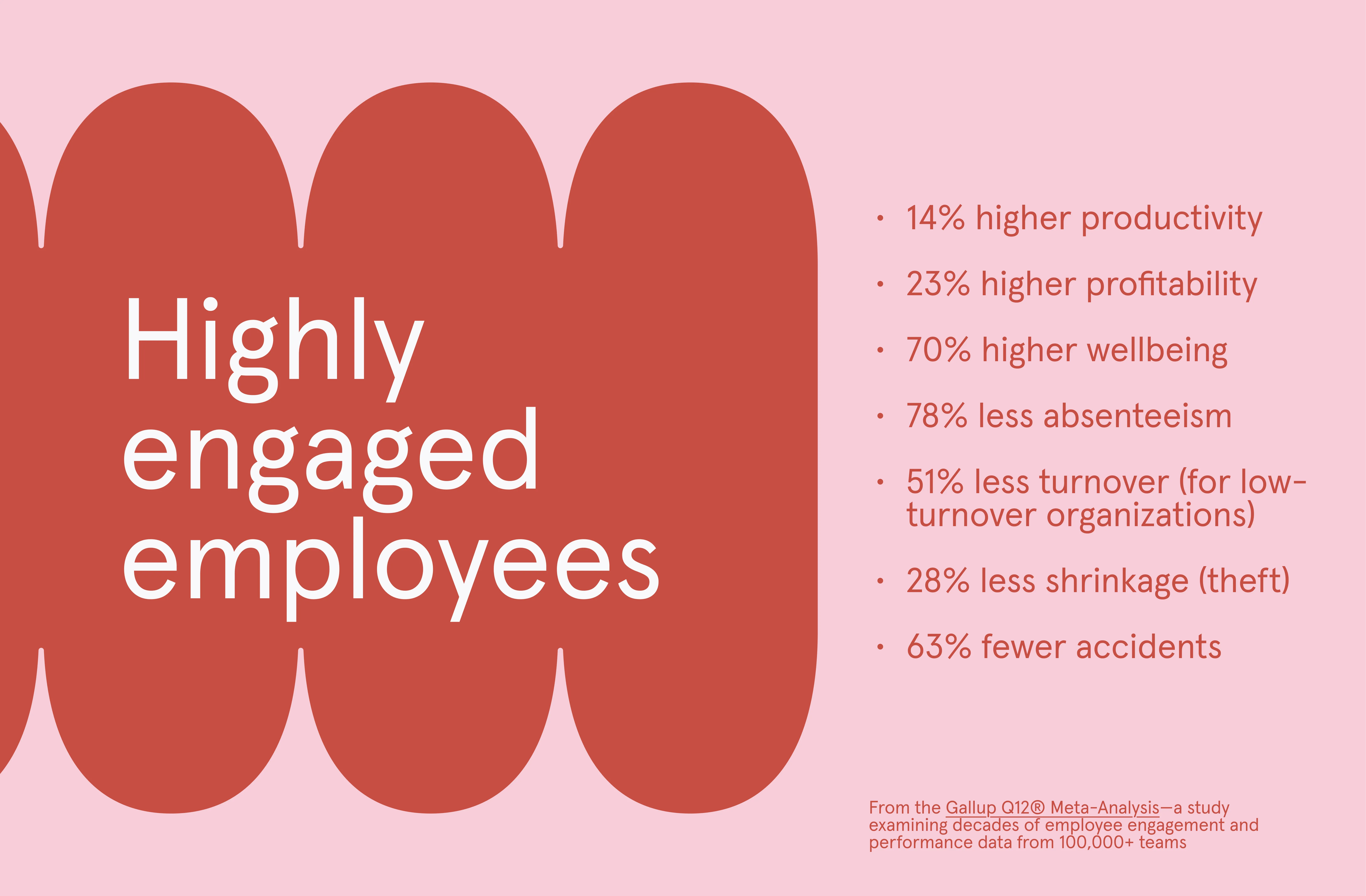
A broken employee feedback culture
We've all been there—HR sends its annual survey, asking for feedback and then... crickets. No response. No follow-up. No change. HR has given you yet another task (fill out this survey) so they can check it off their to-do lists—or that's how it feels.
“Continuously asking employees for feedback without taking action only contributes to disengagement as employees lose trust in the organization’s listening efforts.” - Amanda Chaitnarine, Director of HR Diagnostics, Advisory & Data Insights at McLean & Company
Instead of opening the doors to a meaningful conversation that invites listening and potential change, feedback feels transactional. And when it feels like a chore or more transactional than conversational, you get:
- A broken feedback loop—one where employers mark the employee engagement survey off their list and employees rush through or ignore the survey altogether because they know their feedback isn't valued
- Cynicism from employees who don't think they'll be heard
- Silence from employees who'd rather do their jobs than fill out yet another survey that won't change anything
- Eventual turnover because your employees are tired of not being heard and their feedback falling on deaf ears.
On the flip side, "when employees know their feedback is being heard and acted upon, it will build trust and pave the way to expand focus to additional listening goals in the future," says Chaitnarine.
Employee feedback is a two-way conversation—employees share, employers listen and act.
See how we're building an employee feedback culture at Typeform.
How to shift from a transactional to-do to a relational conversation

So, how do you foster a listening culture at work, one that embraces feedback to reap the maximum benefits of employee engagement? It starts with treating your employees as human beings, being genuinely curious about what they have to say, and inviting open conversations that build trust.
Treat employee engagement as a conversation—not a checklist
You've got KPIs you need to meet. But when considering how to improve employee engagement, think about your surveys less like a series of rating questions and checklists and more like an invitation for a real conversation.
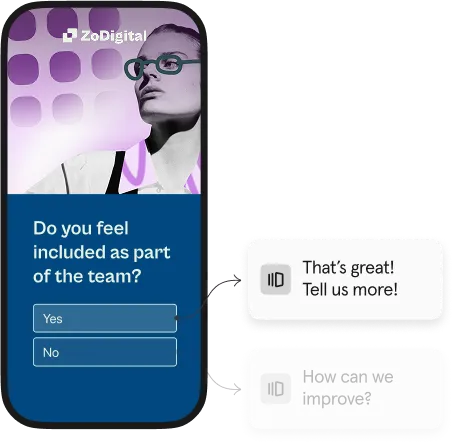
Here's what that might look like:
- Going beyond superficial surveys that gather basic data but not much more. Employee engagement surveys should give you an in-depth view of employee perspectives.
- Creating feedback moments that feel like a conversation. Personalize surveys based on someone's role, use their first name, and create a casual (and logical) flow that feels truly conversational.
- Understanding an employee's "why" with open-ended questions. Get employees to express themselves in their own words to uncover why employees feel the way they do.
- Taking action post-survey to show employees you value their input and that you're fully invested in creating a listening culture at work that acts on employee feedback.
When you treat employee engagement surveys as an opportunity to have meaningful conversations with your teams, you invite feedback and a continuous dialogue that builds trust, encourages continual improvement, and makes employees feel seen and heard.
Express genuine curiosity—don't try to validate assumptions
Do you think you have an engagement problem? Or that employees are extremely satisfied with their jobs? While your assumptions might be valid, you can't know for sure how employees feel unless you ask.
And ask to uncover insights, not to get validation for your existing assumptions. Your employee feedback survey should seek to get insights—even if they contradict what you think is true.
“We all need people who will give us feedback. That’s how we improve.” - Bill Gates
Here's how to approach employee engagement surveys with actual curiosity:
- Ask broad, exploratory questions that give employees the chance to bring up issues you hadn't considered or to give you insights into why something isn't working.
- Ask follow-up questions that invite deeper insights into an answer (you can do this within your Typeform survey using Clarify with AI)
- Avoid leading questions like, "How much do you enjoy your work?" that make assumptions about how employees feel and can lead you to validating what you believe vs. listening to employees.
- Be open to accepting that the feedback you receive may not align with your preconceived ideas.
Remember, the goal of engagement surveys isn't to prove yourself right. The goal is to listen, learn, and improve—it starts with curiosity. When you're open and curious, you get the insights needed to take action. When you're focused on confirming your ideas, you miss opportunities for improvement and undermine the whole point of the survey.
Build trust with employees—don't track them
Let's be honest: employees don't want to give feedback when they fear the consequences or think they'll be negatively judged for their honesty. And the data backs it up:
- According to an AllVoices survey, less than 50% of employees are honest when sharing feedback with HR
- The same study showed that employees who don't give honest feedback do so because they fear retaliation, and they don't believe their companies really want honest feedback
- The good news? The AllVoices survey revealed that 56% of employees who don't share honest feedback would be more likely to be honest if they had a way to share truly anonymous feedback
Even still, some traditional engagement surveys can feel like a trap. So, instead of getting thoughtful responses and insightful data, you end up with generic answers and "meh" data that doesn't give you any real information.
Here's why:
- You're not giving employees the option to respond anonymously, so they're not sharing honest feedback. They're worried you might share answers with their managers or their name will be attached to feedback that isn't so flattering.
- You're asking questions like, "How productive do you feel at work?" that feel like you're tracking metrics that could potentially harm their reputation or future promotions. These questions discourage genuine feedback.
“Why should a company ask for feedback if they don’t want honest feedback? Leaders who are reading the results need to keep an open mind and see the feedback as areas to improve, and to not get frustrated by.” - Emma Bindbeutel, Director of People & Culture at Ventura Growth
Building an employee feedback culture is about trust first and foremost. Create that sense of trust by avoiding identifying questions, like their name, manager's name, or email address. And let employees know you're interested in creating a better employee experience and supporting them—not trying to catch them in a "Gotcha!" moment.
True employee engagement is built around relationships, around conversations. It doesn't happen in spreadsheets or metrics met. As you create your survey, treat it as a conversation and a chance to get the data you need to foster a better workplace.
How Typeform helps you get more honest employee feedback

At Typeform, we're best known for our stunning designs that transform generic forms into branded, beautiful, and powerful data collection forms. But we're more than that.
When it comes to employee engagement, Typeform helps you collect more—and better—data so you can create a better workplace for your people. Here are just a few ways Typeform does that.
A conversational flow
Typeforms ask one question at a time by default, making them inherently more conversational. Imagine asking a friend 20 questions all at once. Overwhelming and confusing.
Our straightforward and conversational design gives employees the space to share honest feedback. Logic routes them through the survey based on their role, team, or experience, so they only get relevant questions, increasing the relevancy of the feedback.
And with recall, you can personalize your employee engagement survey to make it, well... more engaging. And yes, you can personalize without asking questions that jeopardize anonymity—just use previous answers to enhance future questions (automatically).
A frictionless experience
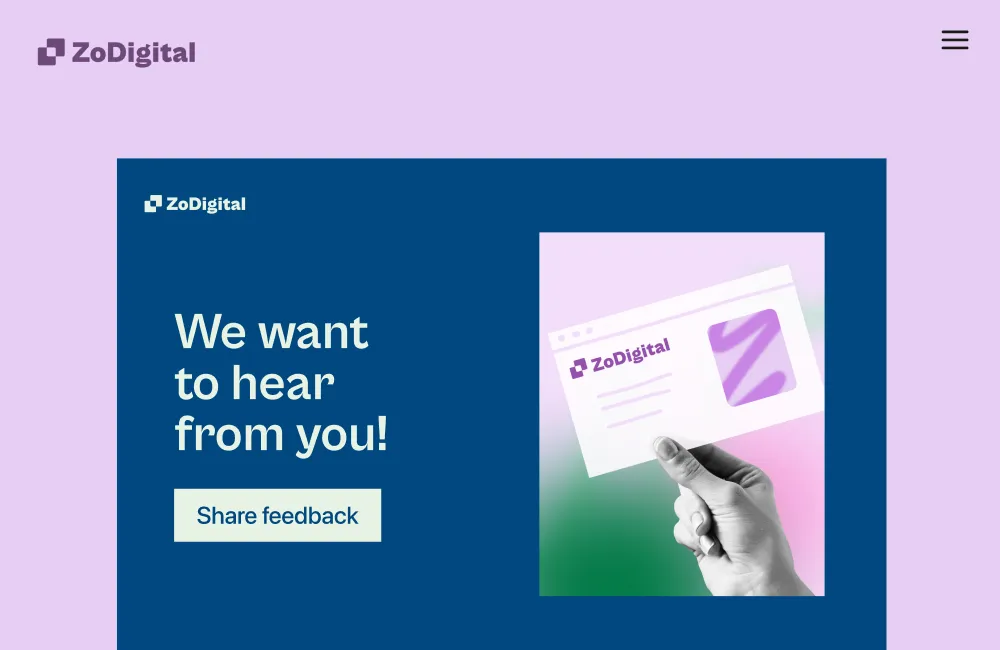
With Typeform, you can embed your survey anywhere your employees are:
- In an email
- On an internal landing page
- In a Slack channel
All they have to do is click the start button and answer the questions. It couldn't be any easier.
Paired with on-point branding, the conversational flow, and different question types to keep them engaged, employees actually want to share feedback.
A friendly conversation

Feedback should feel like a two-way, friendly conversation—not a terrifying interrogation. Typeform lets you treat feedback as interactions with employees instead of back-to-back questions with no engagement.
Statement questions, like those encouraging employees or letting them know there are only a few left, feel casual and friendly and give them a quick break.
But you can also phrase your questions less formally to drive completions. For example, "Work's hard. What would make it better?" and then use picture choice to share options, like "A pizza party," "Send me to Italy," or "Can we get a nap room?"
It feels like a break and is more conversational while still giving you insights into how you can support employees.
A scalable approach to employee feedback
Want to create one survey that feels personal to everyone? Typeform lets you scale personalization through logic and asking only relevant questions. It takes a little planning up front, but using logic means you can create a single employee engagement survey that is personalized to each employee.
Build an employee feedback culture and boost engagement with Typeform
We often get so caught up in the numbers that we can forget that feedback and engagement come from humans. Sure, you need to measure metrics and track KPIs, but how you go about doing that can certainly be on a human level.
Like making your employee engagement surveys more conversational and two-sided. Or acting on feedback, so employees don't see your survey as a checklist item they don't want to do.
And when you do, you can start making real change that fosters a listening culture at work, one that continuously improves based on employee feedback. Because, in the end, engaged employees aren't a result of fancy perks and beautiful dashboards—they're a result of a workplace that listens (and shows that they do).
Ask better questions. Listen more deeply. Act intentionally. Rethink employee engagement with Typeform. Try it for free.
Liked that? Check these out:
.webp)
Opinions and Expertise
Customer flows, not funnels: Why marketers are rethinking how customers move
Marketing funnels assume customers move in straight lines—but they don't. Customer flows use automated workflows to build momentum, with one action triggering the next. See how Typeform Contacts & Automations helps you meet customers where they are, automatically.
Read more

